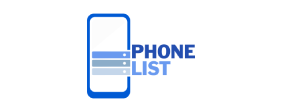The creator economy refers to the ecosystem of independent creators who build audiences and monetize their content, products or services online, often without the need for traditional gatekeepers such as publishers, record labels or agencies What is the creator economy.
Why the creator economy is important
- It gives individuals the opportunity to start a business without investors or a large team.
- It lowers the threshold for creative entrepreneurship.
- It reflects a shift in the way people consume content and make purchasing decisions, often guided by trusted creators.
Whether you’re a fitness coach on Instagram or a gamer on Twitch, cambodia telegram data the creator economy is offering more and more opportunities to make money doing what you love.
How do content creators make money?
Content creators rarely rely on a single source of income. Instead, most build a mix of revenue streams depending on their platform, audience size, and niche. Here are seven of the most common ways creators monetize their content:
1. Sponsorship and brand deals
One of the most common ways that content creators make money is through brand partnerships. In this model, companies pay creators to promote their products or services in a way that feels authentic to their audience.
Sponsorship can take many forms, such as a YouTuber mentioning a brand in the first 60 seconds of a video, an Instagram creator posting a product review, integrates with other tools or a podcaster reading a sponsored post halfway through an episode.
Brands are willing to invest because they know creators have built trust with their audiences, a level of influence that often surpasses traditional advertising.
Pro Tip: Even smaller creators (also called micro-influencers) can attract sponsors if they have a specific and highly engaged audience.
2. Advertising revenue
Ad revenue is one of the easiest ways creators make money: platforms pay them a share of the revenue generated by ads displayed alongside their content.
For example, on YouTube, creators can monetize through the YouTube Partner Program and earn money from ads that appear before, during, or alongside their videos. Bloggers can do the same with ad networks like Google AdSense, Mediavine, or AdThrive, which place display ads on their websites.
Podcast hosts can also generate revenue through dynamic ad insertion, where sponsors’ audio ads are automatically placed within episodes.
3. Affiliate marketing
Affiliate marketing allows creators to earn a commission every time someone buys a product through their personalized link. It’s a performance-based model: the creator only gets paid when their content generates real results, like clicks or sales.
This strategy works especially well for creators who create product reviews, tutorials, or recommendations. For example, a tech YouTuber might link to the gear they use in their video descriptions, or a wellness blogger might recommend supplements and link to them in an article.
4. Selling digital products
Many content creators bundle their knowledge or creativity into digital products that they can sell directly to their audience. These products are often cheap to produce and highly scalable: once created, they can be sold repeatedly without any additional effort.
Common digital products include:
- eBooks and guides
- Online courses or mini courses
- Notion or Excel templates
- Photo presets or video LUTs
- Toolkits and downloadable resources
For example, a productivity developer might sell a digital planner or a time management course, while a designer on Instagram might offer Canva templates or design tutorials.
Platforms like Gumroad, Teachable, china numbers podia and Sellfy make it easy to host and sell these products.
Because margins are high and distribution is direct, digital products are one of the most profitable ways for creators to monetize their expertise, especially when combined with an engaged audience.
5. Memberships and subscriptions
Memberships & Subscriptions Offer creators a way to generate recurring revenue by offering exclusive content or perks to their most loyal fans. Instead of relying on one-time purchases, this model creates a consistent monthly income.
Creators use platforms such as:
- Patreon – for bonus content, behind-the-scenes updates, and community access
- subgroup – for paid newsletters and premium articles
- Buy me a coffee – for donations or members-only messages
- Discord or private communities – for access to Q&A, coaching or networking
For example, a podcast host might offer ad-free episodes and early access to new content to subscribers. A writer might share in-depth essays only with paying members.

